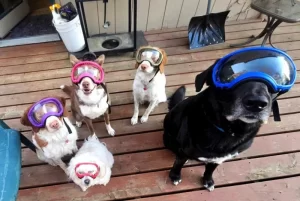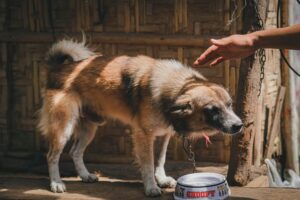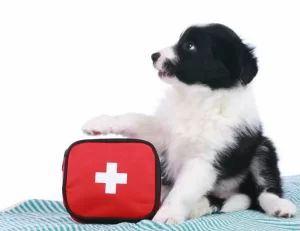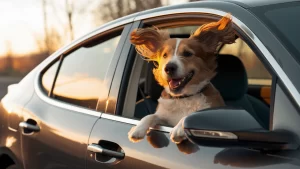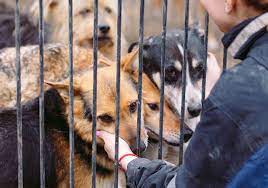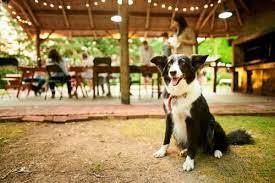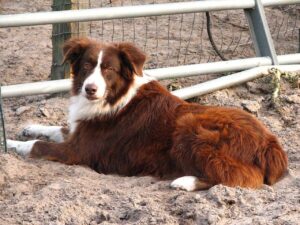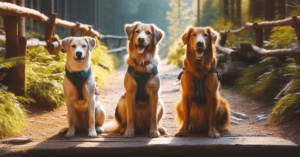More people are packing up the car and bringing their dogs along for new adventures. Traveling with a furry companion isn’t just fun—it often means more bonding, less worry about pet sitters, and even a smoother trip all around. But to really enjoy the drive, you’ll need to plan ahead and know which spots will make both you and your dog feel welcome.
Get ready for practical tips on prepping your pup, what to pack, and choosing the best dog-friendly stops along the way. Whether your dog is a seasoned traveler or this is your first big outing together, solid preparation makes a big difference. With the right approach, every mile becomes a memory for both you and your four-legged friend.
Table of Contents
TogglePreparing Your Dog for the Road
Planning a road trip with your dog takes more than just loading up the car and heading out. Setting your dog up for a safe, fun ride means checking off a few important boxes before you go. The right preparation will give you peace of mind and make your canine companion feel secure every mile of the way.
Health and Safety Preparations
Before any journey, schedule a checkup with your veterinarian. Going over your dog’s health status helps catch any issues early—and most states or hotels will expect your dog to be up-to-date on vaccines. Ask your vet about:
- Vaccinations: Make sure all core vaccines are current, especially rabies.
- Flea and Tick Prevention: Pick up a fresh supply to avoid pests along the route.
- Travel Documents: Some destinations or accommodations require proof of vaccinations. Your vet can provide the paperwork.
- General Health: Address any ongoing issues before you hit the road. A healthy dog makes for a happy trip.
It’s smart to double-check your dog’s ID tags and microchip information as well. Make sure your phone number and address are correct in case you get separated along the way. For more on pre-trip health steps, the American Veterinary Medical Association covers what paperwork and health needs to check before you travel.
Car Training and Comfort
A relaxed, comfortable dog will enjoy the adventure much more. If your dog is new to long drives, start by taking short rides and working up to longer ones. Reward calm behavior and try to end practice trips at a favorite spot so car rides become positive experiences.
- Crate Training: Crates give dogs a safe space on the road. Introduce the crate at home so it feels familiar, not scary. Feed your dog in the crate and let them nap inside with the door open. This positive association pays off during travel. For helpful crate training ideas, check out this guide with key tips.
- Seat Belt Harnesses: If a crate isn’t possible, look for a harness designed for car travel. These harnesses clip into seat belts, keeping dogs safe if you brake suddenly.
- Comfort Tools: Bring favorite blankets or toys in the car for added comfort. Bring a familiar scent from home—think an old shirt or the dog’s bedding.
- Reducing Anxiety or Motion Sickness: Avoid feeding your dog right before departure. Keep the car cool and crack open a window for fresh air. For nervous dogs or those prone to car sickness, talk to your vet about supplements or medications that can help.
Packing the Essentials
To keep both you and your dog comfortable on the road, create a checklist of must-have supplies. Scrambling for a bowl or extra leash in the middle of nowhere isn’t fun—having the right gear keeps travel smooth.
Here are the road trip basics for your dog:
- Water and Collapsible Bowls: Hydration is key.
- Food and Treats: Pack enough for the entire journey, plus a bit extra.
- Favorite Toys and Comforts: Prevent boredom and offer reassurance.
- Blankets or Beds: Line your dog’s seat or crate for extra coziness.
- First Aid Kit: Include basic pet first-aid items and any medications.
- Updated ID Tags/Leash: Carry an extra leash and maintain current contact info.
- Cleaning Supplies: Bring waste bags, paper towels, and stain/odor cleaners in case of accidents.
If you want a complete checklist for dog travel, check out this ultimate dog packing list to make sure nothing gets left behind.
If you’re still deciding what breeds and age groups make for great travel buddies, or want tips for traveling with dogs who need special care, explore more advice and breed breakdowns on bellabeanupdate.com’s dog guide section.
 Photo by Jacub Gomez
Photo by Jacub Gomez
On the Road: Best Practices for Traveling with Your Dog
Life on the road doesn’t mean your dog’s world gets turned upside down. Keeping travel smooth comes down to planning, making thoughtful stops, and sticking to your dog’s favorite basics. A relaxed dog is a happy passenger, and you’ll both enjoy every scenic mile a lot more.
Maintaining Your Dog’s Routine on the Move
Dogs crave predictability, even when the scenery changes by the minute. While it’s tempting to adopt a vacation mindset, sticking close to your dog’s normal routine will help reduce stress and prevent unwanted behaviors.
- Feed and walk your dog on their usual schedule as much as you can. If your dog eats at 8 a.m. at home, aim to do the same on the road.
- Keep familiar items close. Their bed, a favorite toy, and their own bowls can ease anxiety.
- Stick to regular training cues for good behavior at stops and hotels.
- Use the same leash and collar they wear at home. If leash skills need a refresher, see these helpful leash walking tips for dogs: Training Dogs to Walk on Leash.
Even in new places, routines make the environment feel familiar.
 Photo by Спиридон Варфаламеев
Photo by Спиридон Варфаламеев
Tips for Safe and Comfortable Travel Stops
Planning your stops is just as important as planning your driving route. Not every rest area is pet-friendly. To keep your dog safe and make breaks enjoyable:
- Search ahead for pet-friendly rest areas and dog parks. Well-reviewed dog parks or green city spaces give your dog space to move and burn off energy.
- Look for stops with shade and secure walking paths. Hot pavement can hurt paws.
- Plan to stop every two to three hours. This keeps your dog comfortable and hydrated and allows for bathroom breaks, as suggested in these helpful road trip tips for dogs.
- Bring poop bags, wipes, and hand sanitizer for a quick, easy cleanup.
- Never leave your dog in the car, even for a few minutes. Inside temperatures can climb fast and become dangerous.
Use stretching breaks as a chance to practice good leash etiquette and reinforce positive habits away from home.
Feeding, Hydration, and Car Snacks
Food and water routines matter even more on the road. Sudden changes can lead to upset stomachs or car sickness. To keep everyone feeling great:
- Feed at regular times. Avoid meals right before hitting curvy roads—smaller portions during the trip can help reduce motion sickness.
- Carry fresh, cool water. Offer it to your dog at every stop. Portable, spill-proof bowls make things easier.
- Pack healthy, familiar dog treats. These give your pup something to look forward to and help reinforce calm behavior in new places.
- Choose snacks that don’t crumble or stain. Crunchy treats or freeze-dried meats are less messy for the car. For more ideas on safe feeding for travel, check out these fresh food tips for the road.
Bring a few cleaning supplies in case of spills or accidents—being prepared means less stress for both you and your furry co-pilot.
Keeping a close eye on your dog’s routine, scheduling smart stops, and staying on top of food and hydration will help every trip become a healthy, happy adventure.

![The Ultimate Guide to Road Tripping with Your Dog [2025 Update]](https://bellabeanupdate.com/wp-content/uploads/2025/05/pexels-photo-1143369.jpeg)
![The Ultimate Guide to Road Tripping with Your Dog [2025 Update]](https://bellabeanupdate.com/wp-content/uploads/2025/05/pexels-photo-1143369-300x209.jpeg)

